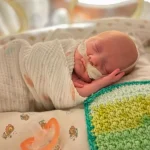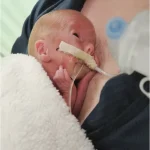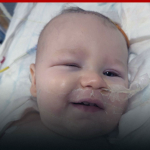Abigail’s Journey: A Mother’s Strength and the Battle to Save Her Child’s Life

Our story began with hope. On November 21, 2021, our beautiful daughter Abigail came into the world — the result of years of struggle, faith, and determination.
Diagnosed with endometriosis at sixteen, I faced enormous challenges conceiving naturally. After countless consultations and failed treatments, my husband and I decided to try IVF in February 2021. Out of several attempts, only two embryos were viable — and miraculously, the very first transfer worked.
We were overjoyed, grateful beyond words, and filled with cautious optimism. For the first few months, everything seemed normal. Early scans showed a healthy, growing baby girl. Despite my high blood pressure, routine tests indicated a low-risk pregnancy. But at our 20-week scan, the technician noticed something unusual — a possible heart defect. We were referred to a pediatric cardiologist, who confirmed it was a mild congenital condition.
It was a terrifying reminder: even a smooth pregnancy can take unexpected turns.

A Complicated Birth and a Fragile Start
As the due date approached, Abigail’s growth began to slow, and doctors closely monitored her progress. Because of my hypertension and the risk of intrauterine growth restriction (IUGR), an induced labor was scheduled for November 20, 2021.
After 12 hours of failed induction, an emergency C-section was performed. Abigail’s heart rate had become dangerously unstable.
When she was born, she was immediately taken to intensive care and then transferred to the NICU (Neonatal Intensive Care Unit).
Her first few days were incredibly difficult. Abigail experienced hypoglycemia at birth and needed ventilator support by day three. She later developed late-onset sepsis, which brought further complications.
For three long weeks, we watched our tiny warrior fight for every breath. Finally, on December 15, we were able to take her home — fragile, but alive.
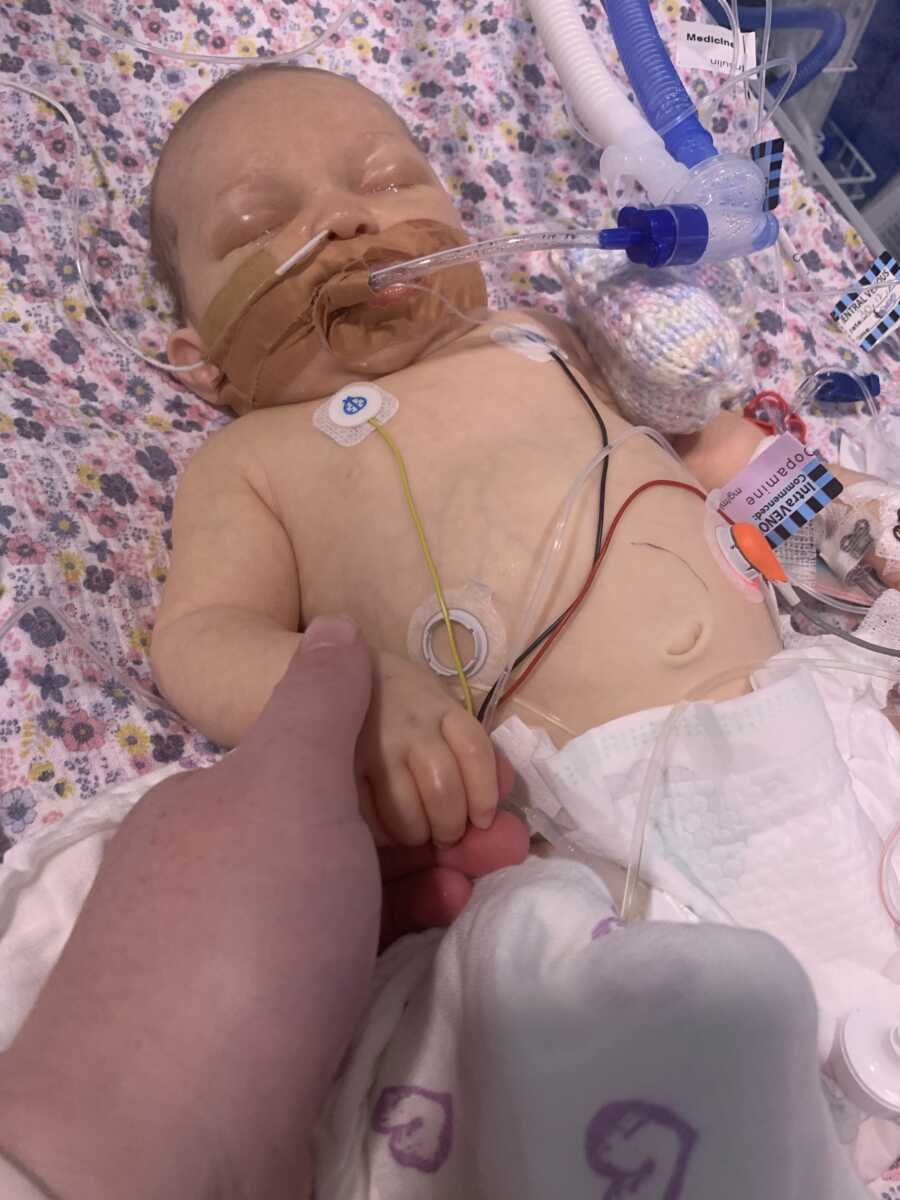
The Alarming Signs at Home
Even at home, it was clear that something wasn’t right. Abigail was lethargic, struggled to feed, felt cold to the touch, and her skin often appeared mottled and yellow. At one month old, she weighed only 5.9 pounds, barely more than her birth weight of 6.1 pounds.
Despite trying formula, adjusting feeds, and following every medical recommendation, her condition did not improve.
Then came the night that changed everything — December 29. Abigail suddenly refused to feed, cried uncontrollably, and became increasingly restless. Around dawn, she began vomiting and showing signs of seizure activity. Her lips turned blue — a terrifying sign of severe hypoglycemia.
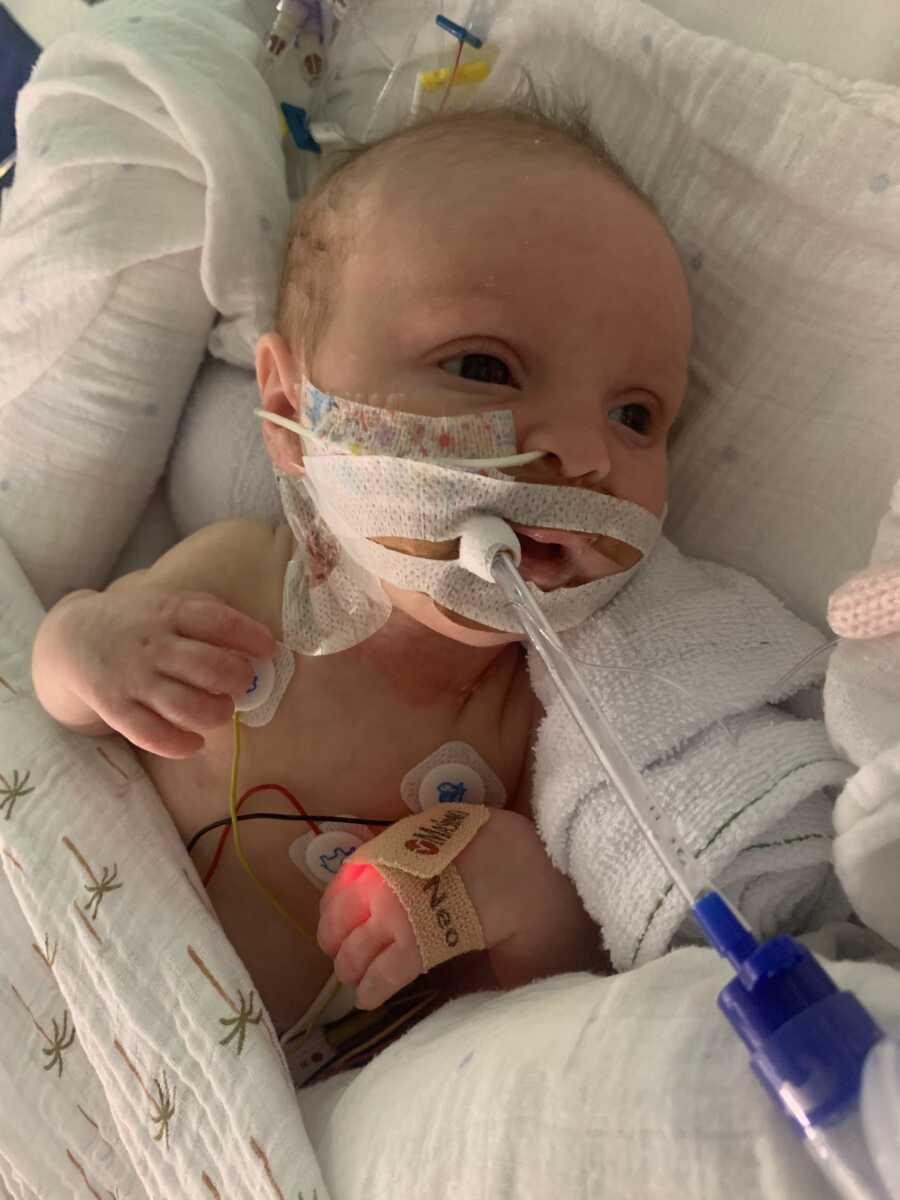
A Life-Threatening Emergency
Panic set in. My husband Aaron, my parents, and I rushed to act. We called emergency services while performing resuscitation maneuvers.
Because of COVID-19 restrictions in Australia, the ambulance response was delayed. By the time paramedics arrived, Abigail’s blood sugar measured 0.8 mmol/L — critically low. She was slipping away.
At the hospital, only I was allowed to accompany her due to pandemic protocols. Watching the medical team perform CPR and intubation on my tiny baby was beyond heartbreaking.
They had to insert an intraosseous line — drilling into her small bone to deliver fluids and medication. Abigail required life support, and all I could do was hold her hand and whisper, “Please fight, baby. Please stay.”
Once stabilized, she was airlifted to Sydney Children’s Hospital for specialized care.
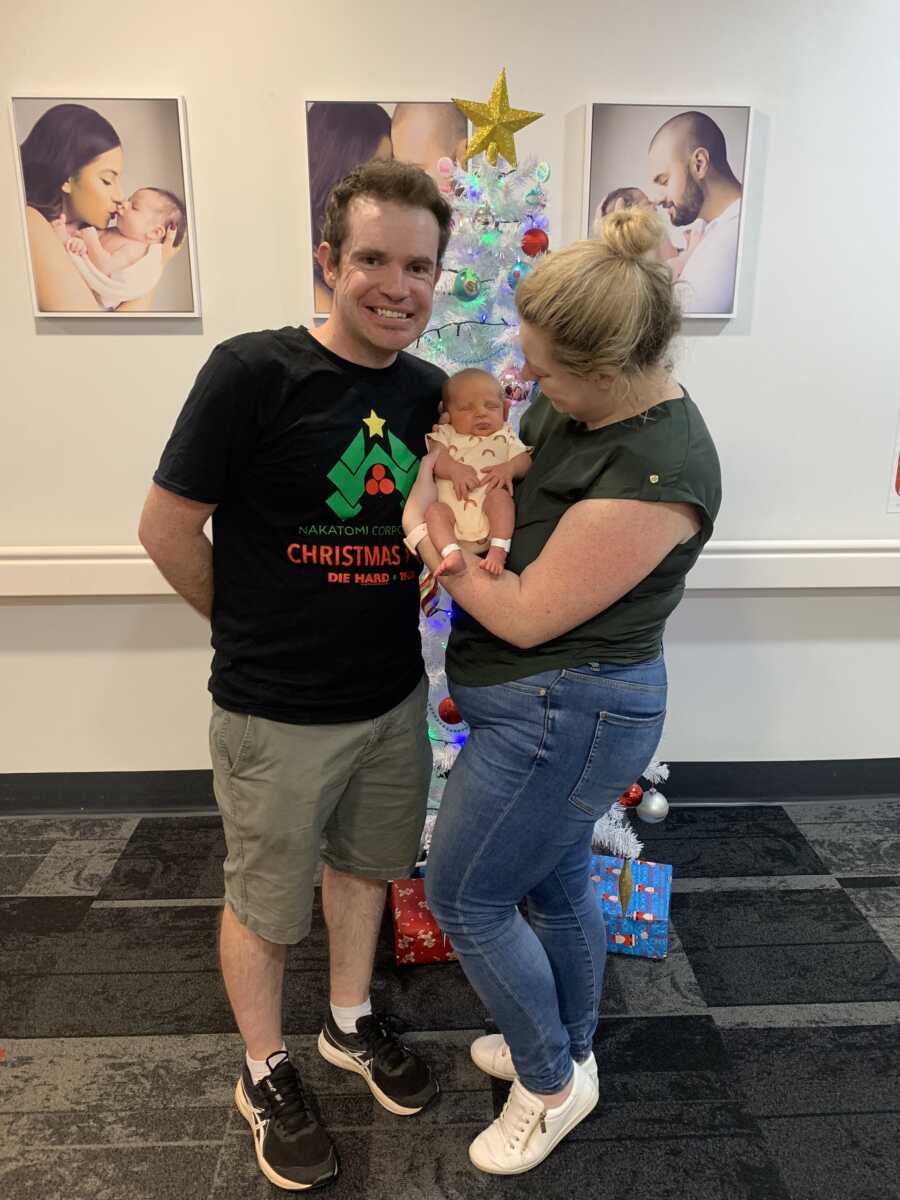
Searching for Answers
The following days were filled with fear, exhaustion, and uncertainty. I hadn’t slept in nearly 12 hours, surviving only on adrenaline and hope. With Aaron and my parents waiting helplessly outside due to restrictions, I felt utterly alone — and yet, I refused to give up.
As Abigail’s condition stabilized, a multidisciplinary team began a series of genetic, hormonal, and neurological tests.
On January 10, an MRI scan revealed that Abigail’s pituitary gland was significantly smaller than normal.
At last, we had an answer: pituitary insufficiency — a rare disorder in which the pituitary gland fails to produce essential hormones. Her low cortisol, thyroid, and growth hormone levels had triggered an adrenal crisis, causing shock, heart instability, and near-fatal hypoglycemia.
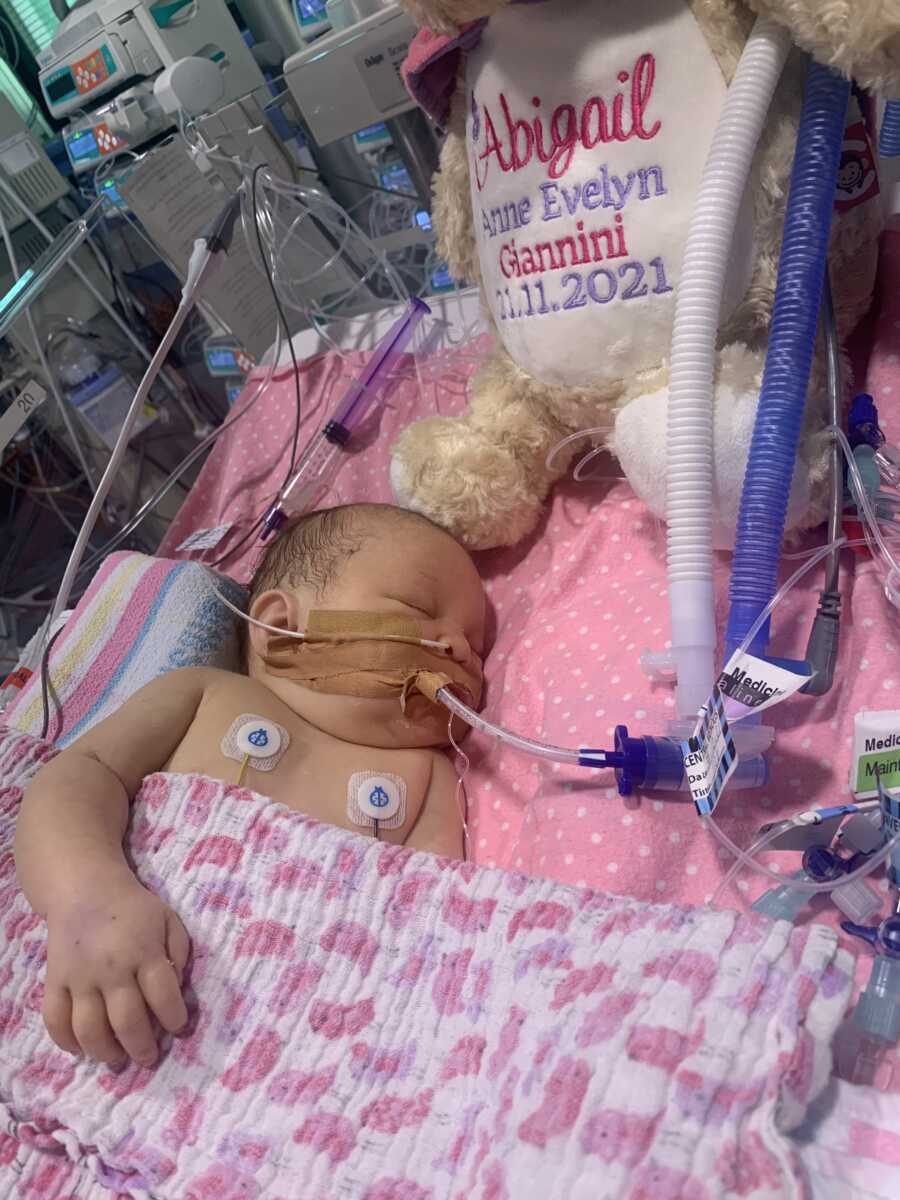
Becoming Medical Parents Overnight
The diagnosis changed everything. Overnight, we became caregivers, researchers, and medical advocates for our daughter.
We learned to administer daily growth hormone injections, inject cortisol during stress, and manage thyroid medication. We were taught how to identify subtle warning signs: irritability, fatigue, or poor feeding could all mean her hormone levels were dangerously low.
Every decision carried immense weight. Was she crying because she was tired — or because she needed an emergency cortisol injection? The mental strain was overwhelming, yet we had no choice but to stay strong.
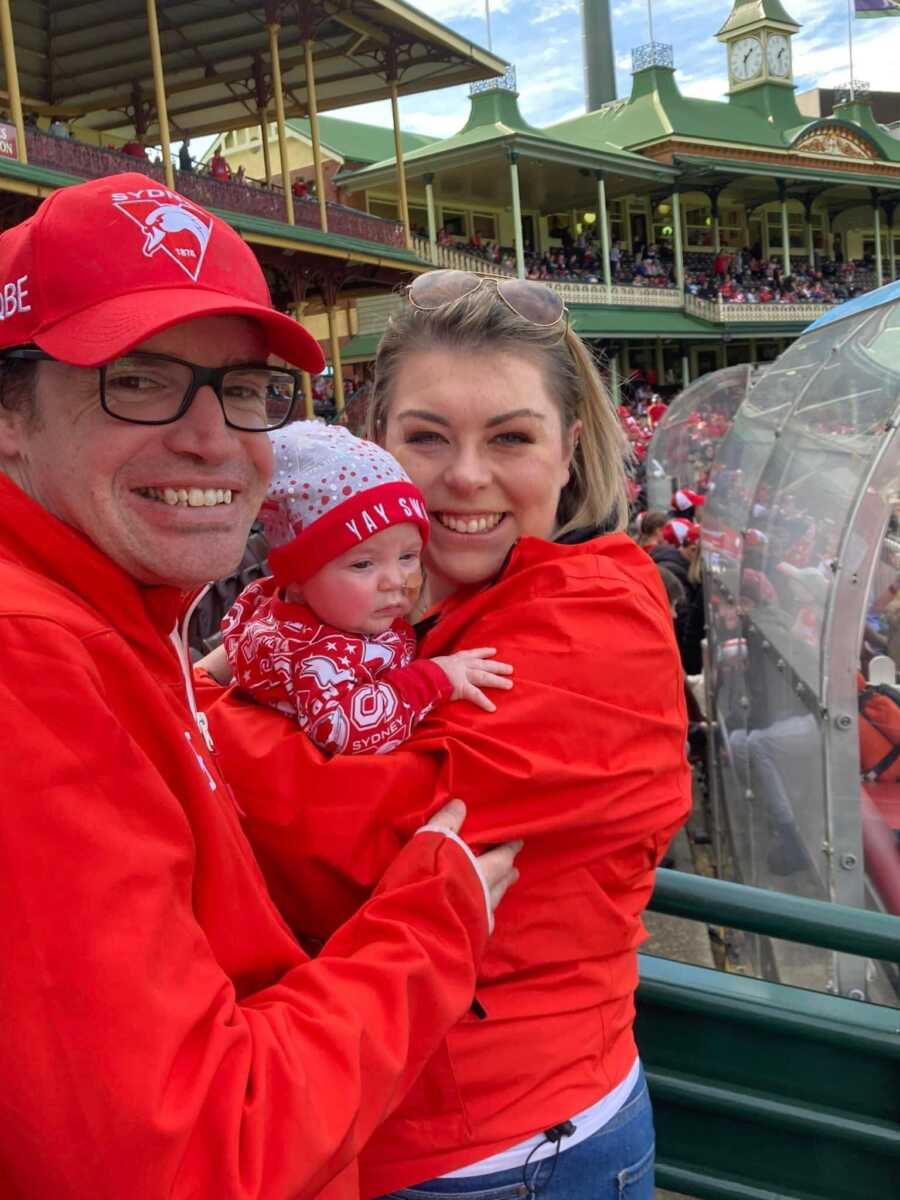
Learning to Live Again
Although Abigail appeared outwardly healthy, her condition required constant attention. We had spent nearly three months in hospitals, missing much of her newborn stage.
Still, we celebrated every small victory — her first smile, her first laugh, her recognition of our voices. These milestones were hard-earned and filled us with indescribable gratitude.
Managing pituitary insufficiency and adrenal crises has become our new normal. The risks are high, but Abigail’s resilience inspires us every single day. Each moment with her is a lesson in courage, patience, and unconditional love.
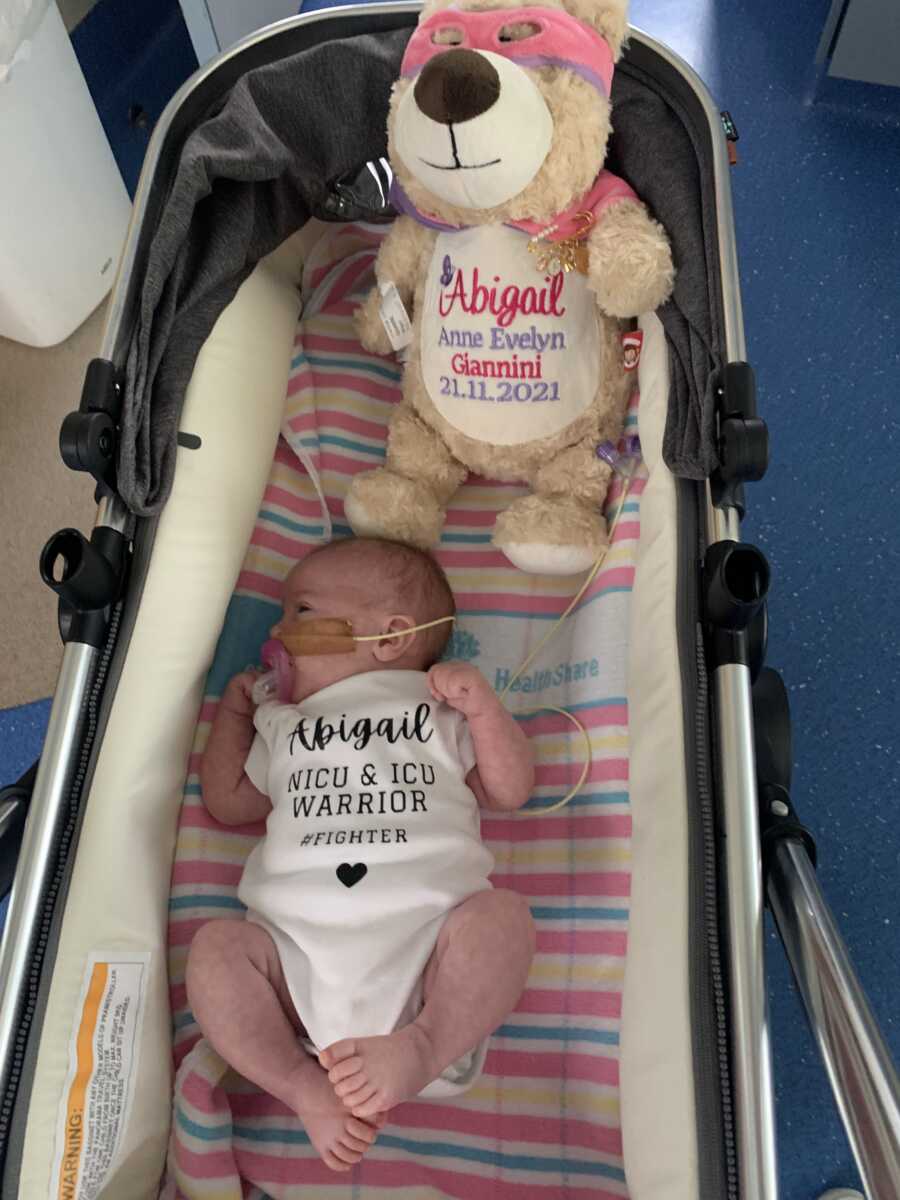
The Spirit of a Fighter
Despite everything she’s endured, Abigail continues to thrive. Her strength defies her size, and her smile lights up our darkest moments.
We’ve learned to trust our instincts, rely on our medical team, and find hope even in fear. Every small step — every feed, every sound, every stretch — reminds us of the miracle of life and the power of love.
Abigail’s story is a testament to the invisible battles many families face, the resilience of children, and the importance of early medical intervention.
Parenthood is not always easy. Sometimes, it means facing the unimaginable — and finding the courage to move forward anyway.

A Living Miracle
Abigail’s journey is far from over. Her condition requires lifelong care, but today she is growing stronger and more vibrant with each passing day. She is our miracle — a symbol of hope, perseverance, and love that refuses to fade.
Each day with her is a gift, a reminder that courage, compassion, and relentless determination can transform fear into life.
Abigail teaches us that even in our weakest moments, the human spirit can endure — and that love, above all else, truly heals. 💖
